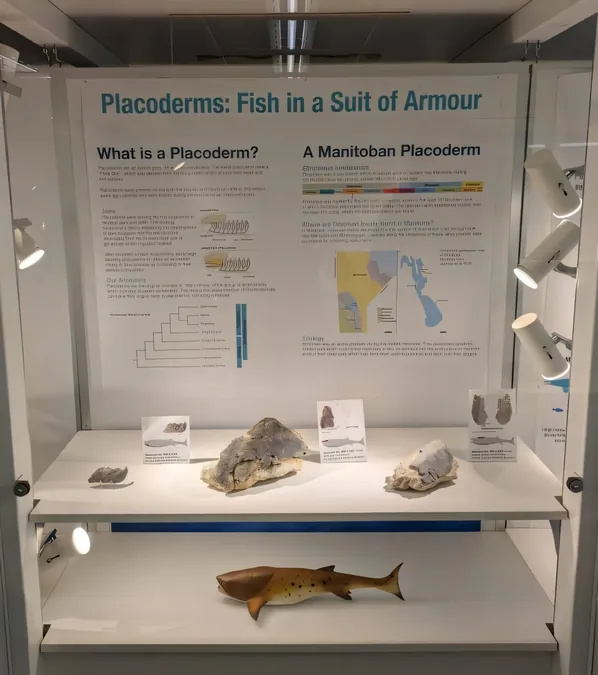
Breakthrough Discovery: New Placoderm Fish Genus Unveiled from Manitoba's Ancient Depths!
2025-07-08
Author: Wei
Unraveling Manitoba’s Hidden Fossil Treasures
Manitoba isn't just famous for its scenic landscapes; it's a hotspot for remarkable fossil discoveries! While everyone knows about the iconic Ordovician Tyndall Stone and the colossal mosasaurs of the Cretaceous period, recent findings reveal that other ancient creatures played vital roles in the province's evolutionary history.
Meet Elmosteus lundarensis: A Revolutionary Find!
In an exciting breakthrough, a dedicated team of researchers, spearheaded by Dr. Melina Jobbins from the PaleoSed+ lab at the University of Manitoba, has introduced a brand-new genus of placoderm fish named **Elmosteus lundarensis**. These prehistoric fish are key to understanding the evolution of jaws and teeth—crucial features in many vertebrates today.
A Glimpse into the Past
Dating back nearly 390 million years, Elmosteus lundarensis thrived in the waters that once covered Manitoba. Its unique features include a head and thorax protected by robust dermal bony armor, while its skeleton is predominantly cartilaginous, akin to modern-day sharks—a material that often eludes fossilization.
Fossil Finds: Where History Meets Discovery
The fossil remains of this ancient fish were expertly unearthed from quarries along the east side of Lake Manitoba, offering a tantalizing glimpse into a bygone era. The discovery not only enhances our understanding of placoderms but also shines a light on the rich tapestry of life that existed long before humans walked the Earth.
Implications for Science and Evolution
Published in the Journal of Systematic Paleontology, this groundbreaking research opens new avenues for studying the origin of jaws and their evolutionary significance. As scientists continue to decode the mysteries of our planet's history, discoveries like Elmosteus lundarensis remind us of the intricate connections between past and present.



 Brasil (PT)
Brasil (PT)
 Canada (EN)
Canada (EN)
 Chile (ES)
Chile (ES)
 Česko (CS)
Česko (CS)
 대한민국 (KO)
대한민국 (KO)
 España (ES)
España (ES)
 France (FR)
France (FR)
 Hong Kong (EN)
Hong Kong (EN)
 Italia (IT)
Italia (IT)
 日本 (JA)
日本 (JA)
 Magyarország (HU)
Magyarország (HU)
 Norge (NO)
Norge (NO)
 Polska (PL)
Polska (PL)
 Schweiz (DE)
Schweiz (DE)
 Singapore (EN)
Singapore (EN)
 Sverige (SV)
Sverige (SV)
 Suomi (FI)
Suomi (FI)
 Türkiye (TR)
Türkiye (TR)
 الإمارات العربية المتحدة (AR)
الإمارات العربية المتحدة (AR)